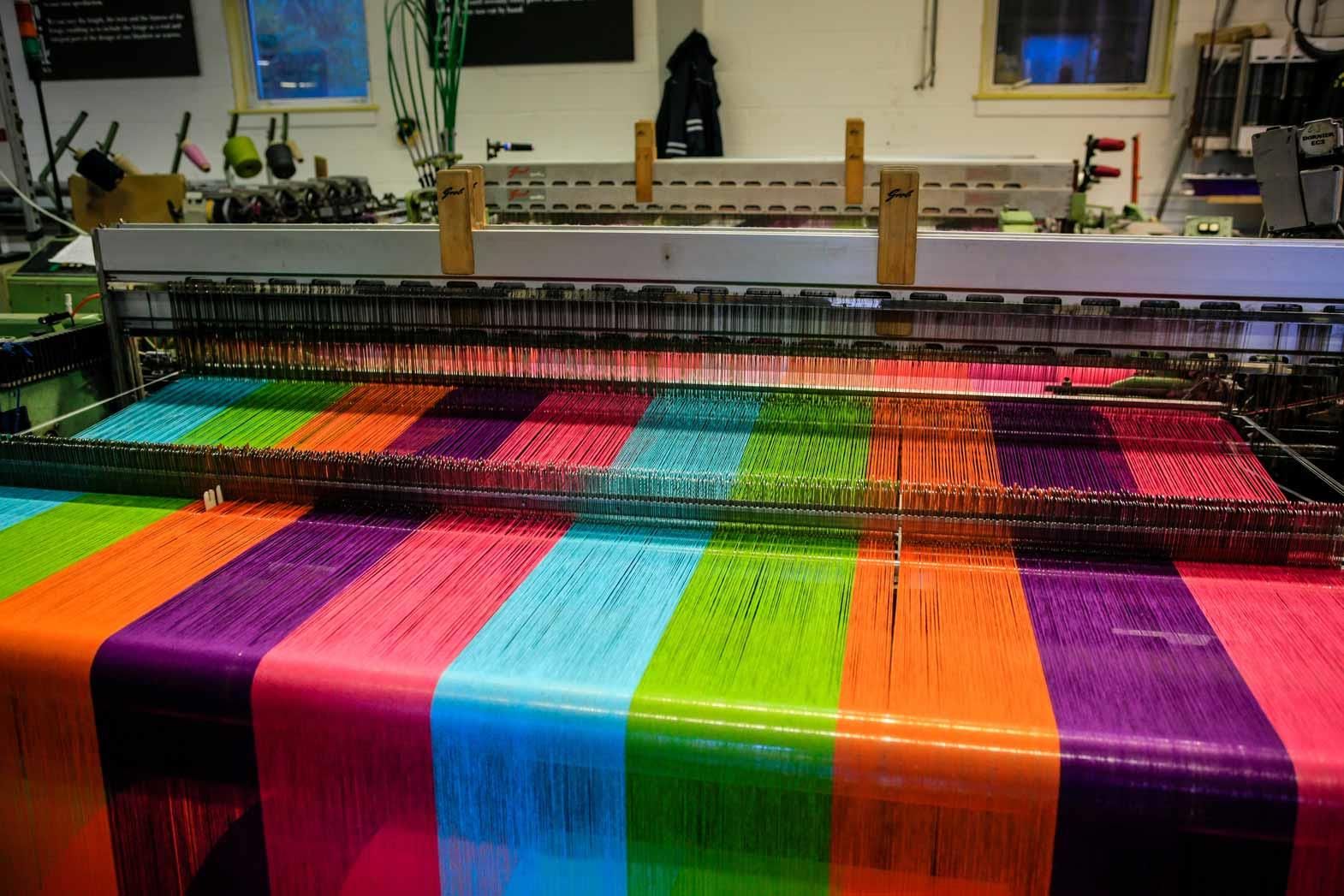(Views expressed in this article are the personal opinion of the author.)
Nature and particularly the acute observation of the natural world, have played, and still play, in the outward appearance of pattern design, decoration and ornamentation.
However,in some respects, the oldest form of human decoration might well have owed more to the pure abstract than to the realism or semi-realism of the interpretation of flora and fauna. One of the simplest forms of textile pattern work,misleadingly so, is that of plaid, gingham, or tartan, the use of vertical and-horizontal intersecting lines.
This could well be one of the oldest forms of human pattern work, certainly for woven textiles at least. To follow the line of warp and weft, however cursory,seems the simplest, yet most effective use of the system of weaving, which itself is structured by the vertical and horizontal nature of warp and weft. Asan aside, it can sometimes be confusing as to which is warp and which is weft,I was once told to simply remember that you have to warp up a loom, and weft had to go left and right. Therefore, always link 'warp' with 'up' (vertical)and always link 'weft' with 'left' (horizontal). That might well confuse issues further, but it is the way I always tried to remember.
This simple vertical and horizontal pattern work, along with its myriad diversions and interpretations, has been with us for countless generations and will probably stay with us for countless generations to come. It is near universal,as is weaving, and whilst some cultures and regions may well claim hegemony over this form of pattern work, it is too universal within human culture to allow any one culture to have precedence over a simple warp and weft themed design.
Even though the representation of nature was not directly included within this abstracted form of pattern work, it is always interesting how much the local environment impinges on the human conscience. Often lines could signify, by their colour, texture and tone, elements of the natural world, as interpreted by observation. It could be seen perhaps as a way of weaving the real world into the structure of the cloth. This can be seen more readily today in the traditional interpretation of Scottish tartan, as well as that of the introduction of new tartans, where colour is often associated personally either with the individual or group who commissioned the tartan, or the district and region which they call home.
Colour then is an identifier, an interpreter of the homeland of significant communities, there is no reason not to suspect that this might well have been the idea behind so many different permutations of this simple pattern, particularly when specific colouring and line definition is present on so many early forms of this textile that have been found in various locations across Europe. It could be seen that perhaps significant colour variations had to do with specific dominant colours of landscape, whether moorland, wood or sea. To be fair, we should also be aware of the regional limitations that natural dyes placed on pattern work. However, this could also be interpreted as significantly reflecting the nature of the local environment of a clan or community, whether consciously or not, by using the local vegetation to dye fabric.
Although this is all very much a case of supposition and conjecture, it is interesting sometimes to think a little about interpretation and symbolism when looking at the seemingly most innocuous pattern work. Despite the fact that I have temporarily put down my placard declaring that the bulk of historical pattern, decoration and ornament owes its origin to the human interpretation of the natural world, and our interaction with it, it still seems to significantly underpin this article, so perhaps there is no way of denying or dispassionately stepping back from a conviction, particularly one so personally identified with the writer.
Although pattern work for weaving has come a long way from the seemingly simple nature of these patterns, they still have the ability to remain contemporary as well as reflecting the traditional. They are one of our earliest forms of woven pattern work and one of our most enduring. Perhaps we still wish, on some level, to acknowledge our roots, to admit at times to a form of continuity, rather than the short-term and the fleetingly distracting of the contemporary. An idle thought perhaps, but still worth pondering.
This article was originally published in the Design, Decoration, Craft Blog.








Comments